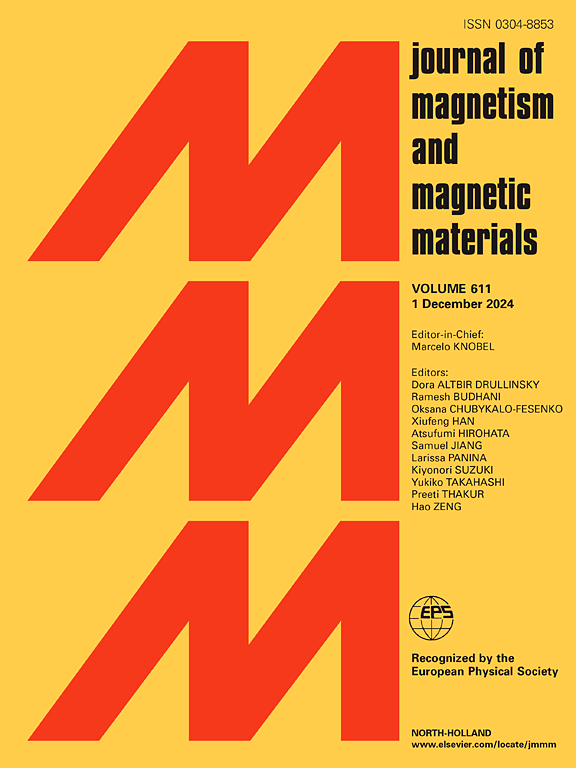Corrosion resistance of Al2O3/Cr composite coating on sintered NdFeB magnet
IF 2.5
3区 材料科学
Q3 MATERIALS SCIENCE, MULTIDISCIPLINARY
引用次数: 0
Abstract
To improve the corrosion resistance of sintered NdFeB magnets, a composite coating of Al2O3/Cr was applied to the surface of the magnet using a combination of cathodic plasma electrolytic deposition (CPED) and double glow plasma deposition techniques. The morphologies of the surface and fractured cross-section, as well as the phase composition and corrosion resistance of the composite coatings, were examined through SEM, XRD, accelerated corrosion immersion test, and electrochemical tests, respectively. The influence of the composite coating on the magnetic characteristics of sintered NdFeB magnet was also evaluated. The results show that the Al2O3 intermediate layer is completely covered by the Cr coating and the interface between the Al2O3 layer and the Cr layer forms a mechanical interlocking effect. The surface of the Al2O3/Cr coating exhibits a hump cellular-like structure with the preferred orientation of Cr (200) plane. Compared with uncoated NdFeB magnet, the maximum magnetic energy product of the Al2O3/Cr composite coated sample decreases by 11.1 %. In the sulfuric acid immersion test, the weight loss of the Al2O3/Cr coated sample is only 15.04 % of that of the uncoated sample. The Al2O3/Cr coated NdFeB sample also demonstrates superior corrosion resistance compared to both the uncoated and Cr coated samples in the electrochemical tests. The Al2O3/Cr composite coating provides a new strategy for improving the corrosion resistance of sintered NdFeB magnets.
求助全文
约1分钟内获得全文
求助全文
来源期刊

Journal of Magnetism and Magnetic Materials
物理-材料科学:综合
CiteScore
5.30
自引率
11.10%
发文量
1149
审稿时长
59 days
期刊介绍:
The Journal of Magnetism and Magnetic Materials provides an important forum for the disclosure and discussion of original contributions covering the whole spectrum of topics, from basic magnetism to the technology and applications of magnetic materials. The journal encourages greater interaction between the basic and applied sub-disciplines of magnetism with comprehensive review articles, in addition to full-length contributions. In addition, other categories of contributions are welcome, including Critical Focused issues, Current Perspectives and Outreach to the General Public.
Main Categories:
Full-length articles:
Technically original research documents that report results of value to the communities that comprise the journal audience. The link between chemical, structural and microstructural properties on the one hand and magnetic properties on the other hand are encouraged.
In addition to general topics covering all areas of magnetism and magnetic materials, the full-length articles also include three sub-sections, focusing on Nanomagnetism, Spintronics and Applications.
The sub-section on Nanomagnetism contains articles on magnetic nanoparticles, nanowires, thin films, 2D materials and other nanoscale magnetic materials and their applications.
The sub-section on Spintronics contains articles on magnetoresistance, magnetoimpedance, magneto-optical phenomena, Micro-Electro-Mechanical Systems (MEMS), and other topics related to spin current control and magneto-transport phenomena. The sub-section on Applications display papers that focus on applications of magnetic materials. The applications need to show a connection to magnetism.
Review articles:
Review articles organize, clarify, and summarize existing major works in the areas covered by the Journal and provide comprehensive citations to the full spectrum of relevant literature.
 求助内容:
求助内容: 应助结果提醒方式:
应助结果提醒方式:


